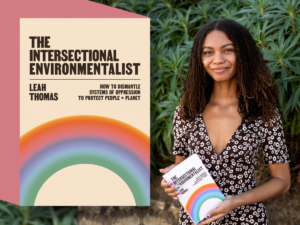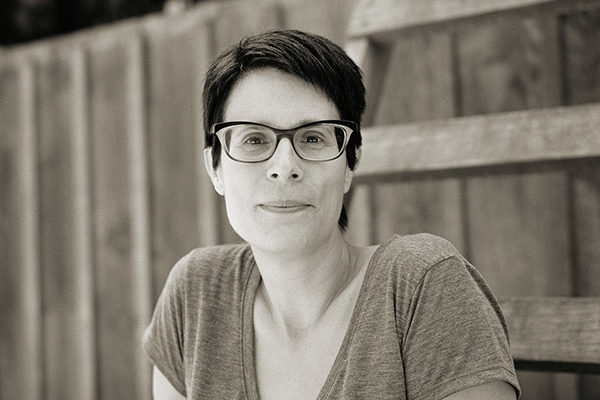Kittie Mae Morris received a CAF grant for “BLUE.,” an interdisciplinary dance piece that brings awareness to dolphin endangerment. Tymesha-Elizabeth Kindell and Gauri Kasarla, 2023 CAF Navab Fellows, talked to Kittie Mae about “BLUE.,”—which she performed in August at the Anacostia Art Center’s Black Box Theatre in Washington, D.C.—as well as her interest in these endangered animals. The title of this piece, Her Blue Body, refers to the title of Alice Walker’s poem about Mother Earth, ‘Her Blue Body Everything We Know.’
Although Kittie Mae Morris was born and raised in Chicago, her connections to the literal and metaphorical movements of people in West Africa have been instrumental in guiding her career as a dancer and as an environmental activist. “I have traced my family lineage with my twin sister through other family members and census logs to create our family tree,” she says. “My grandmother didn’t practice a specific West African religion but we traced spirituality back through our lineage.”
That knowledge, literally embodied in generations of Black women, inspires her work—particularly since Black women, and Black women dancers, continue to be impacted by harmful stereotypes that reinforce systemic and structural racism. “I am a Black woman whose autonomy and body frame go against systemic and structural racism that dictates the dance industry,” she notes. “In the entertainment, commercial, and beauty industry, Western beauty standards and whitewashing control the type of artist and talent chosen.”

The Intersectional Environmentalist by Leah Thomas
“BLUE.” not only provides an opportunity for Kittie Mae to showcase her skills from her BFA in Dance, but for her to combine her passion for dance and environmental justice. “I have always been interested in ecology,” she says, “but I never knew where or how I would start.” As it turned out, her journey began when she encountered books such as The Intersectional Environmentalist by LeahThomas and Undrowned: Black Feminist Lessons from Marine Animals by the marine scientist Alexis Pauline Gumbs.

Undrowned by Alexis Pauline Gumbs
Undrowned combines the lives of sea animals with thoughtful questions about the experiences and struggles of Black women, including those who are working as marine biologists and on environmental issues as a whole. Gumbs writes: “I just wanted to know which whale was which, but I found myself confronted with the colonial, racist, sexist, heteropatriarchalizing capitalist constructs that are trying to kill me—the net I am already caught in, so to speak.”
“I identify as a mammal,” Alexis Pauline Gumbs declares. “I identify as a Black woman, ascending with and shaped by a whole group of people who were transubstantiated into property and kidnapped across the ocean.” Undrowned piqued Kittie Mae’s interest as she began to reflect on the parallel movements of Black women and dolphins.
Undrowned struck Kittie Mae close to home—literally. She lives in a Black community in southeast Washington D.C. by the Navy Yard, a location for six different superfund sites. The realization that Black bodies were being poisoned fueled her desire to learn more about ecological discrimination and environmental justice.
This experience in turn helped Kittie Mae see how marine mammals, particularly endangered dolphins, were also suffering because of human behavior. Overfishing was reducing their food supply; dolphins were being killed and used for fish bait. Dams, and other human activities, were introducing chemical and noise pollution into the water that impeded dolphins’ ability to navigate the seas, hunt, and communicate. “BLUE.” became a vehicle for Kittie Mae to explore what environmental justice for dolphins might mean.
Kittie Mae saw how dolphins use their entire body to express both joy and pain, which she views as a survival tactic. “I incorporate the movement of dolphins into my dance performance through the fluidity of modern and contemporary movements,” she says. “I use neck rolls to symbolize swimming; I move my upper body clockwise to resemble the flow of water; I lift my palms towards each other to the ceiling to reflect a dolphin breaching the ocean.”
The vocabulary of dance enables Kittie Mae to understand dolphins’ experience and amplify environmental concerns and connections in a different manner than words. Water, for her, is the focal point for both humans and dolphins—both species’ ecosystems depend on it, and humans, she observes, need dolphins to maintain a sense of balance. She hopes that “BLUE.” will serve as a way for other artists and activists to investigate environmental justice in the future.
Tymesha-Elizabeth Kindell is majoring in History and Sustainable Development at Columbia University. Gauri Kasarla is also at Columbia, studying Art History and Visual Art.





